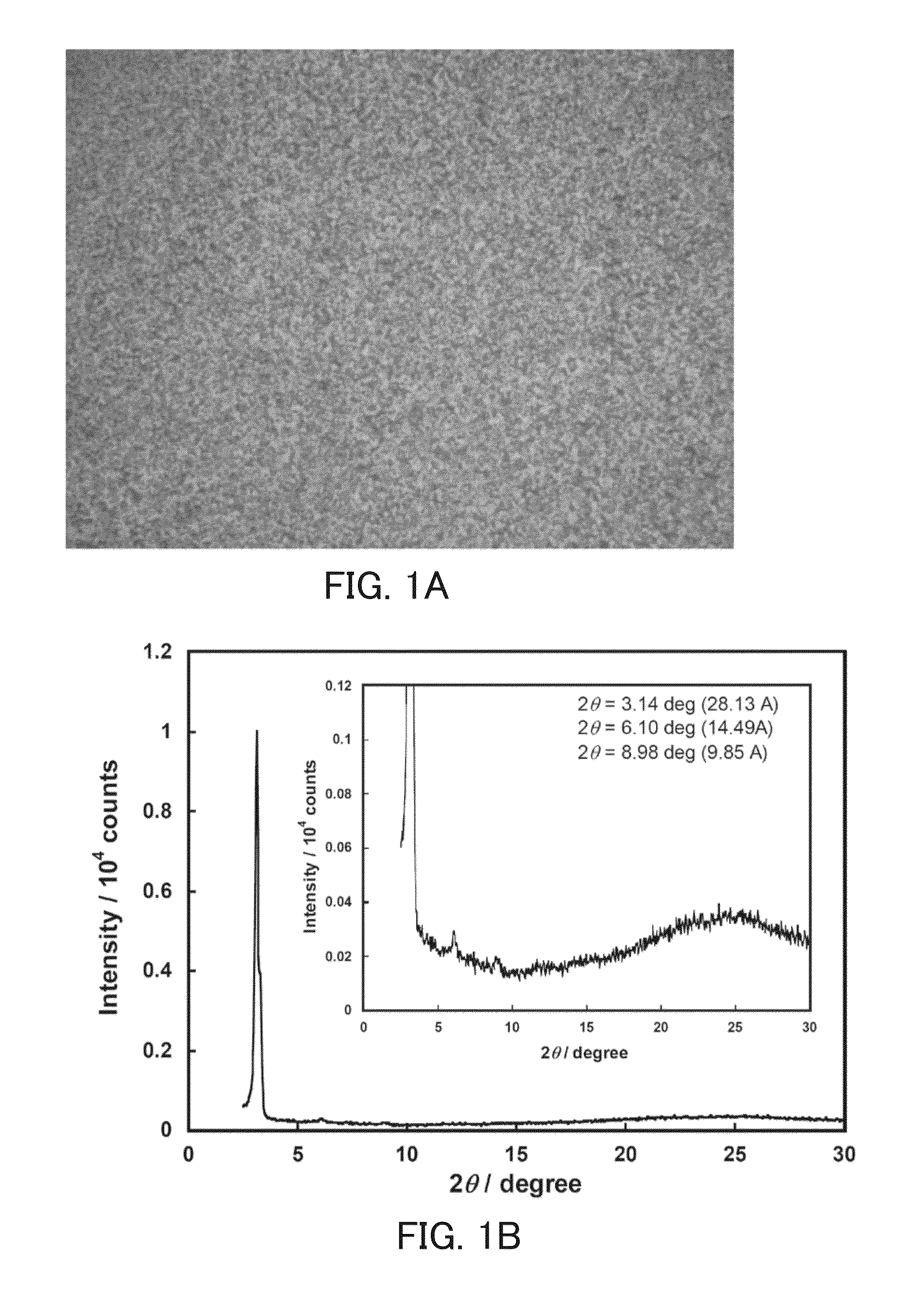Perylene tetracarboxylic acid bisimide derivative, n-type semiconductor, a method for producing n-type semiconductor, and electronic device
- Summary
- Abstract
- Description
- Claims
- Application Information
AI Technical Summary
Benefits of technology
Problems solved by technology
Method used
Image
Examples
reference example 1
Synthesis of perylene tetracarboxylic acid bis(allylimide) (Compound (6), m=1, n=1)
[0131]4.12 g (10 mmol) of perylene tetracarboxylic acid anhydride (PTCDA) and 2.01 g (11 mmol) of anhydrous zinc acetate were suspended in 50 ml of quinolone. 1.18 g (21 mmol) of allylamine was added to a resultant suspension, which was then heated at 120° C. for 5 hours. This reaction solution thus obtained was cooled, and diluted hydrochloric acid was added thereto, and a resultant solution was filtered to obtain a reddish brown precipitate. The precipitate thus obtained was washed with diluted hydrochloric acid, water, and methanol in this order and dried. Thus, 4.82 g (10.3 mol) of a red powder was obtained as an intended compound (6). A yield of the compound (6) was 98%. The compound (6) was barely dissolved in an organic solvent and thus was used in a subsequent reaction without purifying. IR spectrum values of the compound (6) are shown below.
[0132]Compound (6):
[0133]IR (ATR): v=1691, 1653, 158...
reference example 2
Synthesis of 1,8-nonadiene-5-ylamine (Compound (9), m=1, n=1)
[0134]9.21 g (35 mmol) of triphenylphosphine, 4.50 g (32 mmol) of 1,8-nonadiene-5-ol (8), and 6.03 g (41 mmol) of phthalimide were dissolved in 150 ml of tetrahydrofuran. This solution thus obtained was stirred for 30 minutes, and at room temperature, 15 ml (33 mmol) of diethyl azodicarboxylate (2.2 mol / l solution in toluene) was thereafter dropped in the solution, which was then stirred for 12 hours. Subsequently, hexane was added to the solution, and a precipitate was filtered off, and the filtrate thus obtained was dried over sodium sulfate. The solvent was distilled off, and the crude product thus obtained was purified by silica gel column chromatography (eluent: hexane:ethyl acetate of 5:1). The product thus obtained was dissolved in 50 ml of methanol, and 3 ml of hydrazine hydrate was added to the solution thus obtained, which was then refluxed for 1 hour. The reaction solution thus obtained was cooled, and a white p...
reference example 3
Synthesis of perylene tetracarboxylic acid bis(1,8-nonadiene-5-ylimide) (Compound (10), m=1, n=1)
[0137]2.05 g (5.2 mmol) of perylene tetracarboxylic acid anhydride (PTCDA) and 1.09 g (5.9 mmol) of anhydrous zinc acetate were suspended in 30 ml of quinolone. 1.52 g (10.8 mmol) of 1,8-nonadiene-5-ylamine (9) was added to a resultant suspension, which was then heated at 120° C. for 5 hours. The reaction solution thus obtained was cooled, 20% hydrochloric acid was added thereto, a resultant solution was filtered to obtain the reddish brown precipitate thus obtained, and the precipitate was washed with diluted hydrochloric acid. The precipitate thus obtained was purified by silica gel column chromatography (eluent: dichloromethane). The crude product thus obtained was dissolved in dichloromethane and was then re-precipitated with ethyl acetate. Thus, 2.060 g (3.2 mmol) of a red powder was obtained as an intended compound (10). A yield of the compound (10) was 62%. Values obtained by inst...
PUM
 Login to View More
Login to View More Abstract
Description
Claims
Application Information
 Login to View More
Login to View More - R&D Engineer
- R&D Manager
- IP Professional
- Industry Leading Data Capabilities
- Powerful AI technology
- Patent DNA Extraction
Browse by: Latest US Patents, China's latest patents, Technical Efficacy Thesaurus, Application Domain, Technology Topic, Popular Technical Reports.
© 2024 PatSnap. All rights reserved.Legal|Privacy policy|Modern Slavery Act Transparency Statement|Sitemap|About US| Contact US: help@patsnap.com










